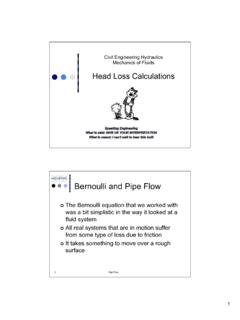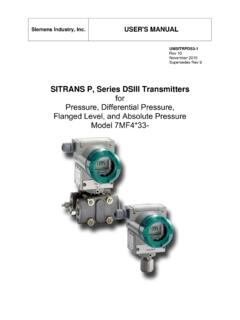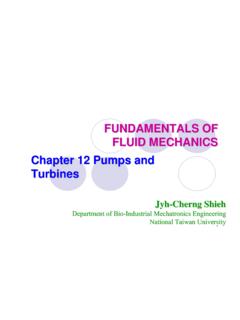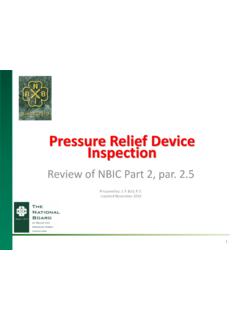Transcription of Relationship between density, pressure, and temperature
1 Relationship between density , pressure , and temperature What happens to density if pressure increases? Increases ~P (Boyle's Law). What happens to density if temperature increases? Decreases ~ 1/T (Charle's Law). What happens to pressure if temperature increases? Increases P~T (Gay-Lussac's Law). Putting all 3 together, we have P ~ T. Relationship between density , pressure , and temperature The ideal gas law for dry air P Rd T Stull ( ). Rd: gas constant for dry air Equals to 287 J/kg/K. Note that P, , and T have to be in units for this equation to work using this value of Rd Numerical example What is the pressure of dry air with a temperature of 10 oC and a density of 1kg/m3?
2 Use the ideal gas law: P = Rd T. Need to express all quantities in units T = 10 oC = 10+ K = K. = 1 kg/m3 already in units p = RdT = = 81264 Pa Classwork example What is the density of dry air with a temperature of 20 oC and a pressure of 800 hPa? Use the ideal gas law: P = Rd T. Need to express all quantities in units T = 20 oC = 20+ K = K. P = 800 hPa = 800 x 100 Pa = 80000 Pa = P/Rd/T = 80000/287 = kg/m3. For moist air: Question for thought: At the same temperature and pressure , is moist air more dense or less dense than dry air? Answer: Less dense!
3 At the same temperature and pressure , the same volume of gas contains the same number of molecules. Since H2O molecules weigh less than N2 or O2 molecules, the same volume of moist air actually weighs less than the same volume of dry air Ideal gas law for moist air: One way to allow for the difference between moist and dry air is by using a different gas constant for moist air However, meteorologists chose instead to define a virtual temperature . Tv T (1 ) Stull ( ). r is water vapor mixing ratio Ideal gas law for moist air: P Rd Tv Stull ( ).
4 In a nutshell, moist air of temperature T. behaves as dry air with temperature Tv Review of equations covered in Chapter 1. density : = M/V (mass per unit volume). pressure : P = F/A (force per unit area). Hydrostatic equation: p = - g z Transformation of temperature TK = TC + TF = TC x 9/5 + 32. Ideal gas law For dry air: P = Rd T Rd = 287 J/kg/K. For moist air: P = Rd Tv Where Tv = T (1 + r) (virtual temperature ). r = mass of water vapor/mass of dry air (water vapor mixing ratio). Note that unless specified, most equations only work if units are us







